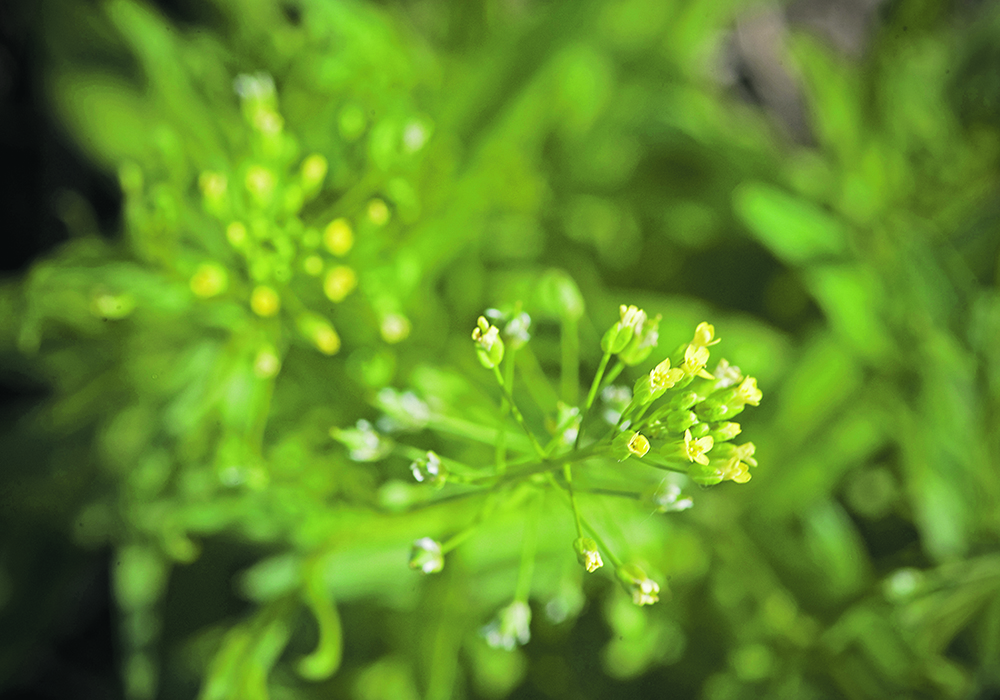When canola is priced at $15 to $17 per bushel, prairie farmers can’t be bothered with minor crops.
One of those minor crops is camelina, which took an acreage hit in 2021.
In 2020, Saskatchewan likely had 15,000 to 20,000 acres of camelina, an oilseed in the brassica family of crops. This year, the figure is closer to 5,000.
“We (contracted) just shy of 3,000 acres this year,” said Carlene Sarvas, camelina production lead with Smart Earth Camelina, a Saskatoon company that develops camelina varieties, sells seed and contracts production.
Read Also

Critical growing season is ahead for soybeans
What the weather turns out to be in the United States is going to have a significant impact on Canadian producers’ prices
The company was previously known as Smart Earth Seeds. It is a major player in Western Canada’s camelina sector but other companies and farmers also have in interest in the oilseed. However, many farmers who previously grew camelina chose to seed canola or other crops in 2021.
Total camelina acres ranged from 5,000 to 6,000 in Saskatchewan.
“It was a large drop from last year. We, alone, had just under 10,000 (contracted acres) last year,” Sarvas said.
Smart Earth has been developing customers in the fish farm business for several years. Camelina oil has high levels of omega-3 fatty acids and has the potential to displace fish oil in the aquaculture industry.
“The use of wild-sourced fish to feed the farmed fish is not sustainable, either ecologically or economically,” Claude Caldwell of Dalhousie University said in a statement. “Camelina could be a viable alternative.”
Smart Earth Camelina also has customers in the equine industry. Horse owners feed camelina oil as a supplement and there’s interest from pet food companies because it helps control inflammation. Camelina meal can be used as feed for laying hens and broilers.
“(But) for scale, in the next couple of years, nothing is going to rival our aquaculture business,” said company founder and president Jack Grushcow in 2020. In that year, the company shipped a rail car of camelina from Saskatchewan to the West Coast.
Doing that could be more challenging in 2021 because camelina production will drop substantially this year.
In addition to fewer acres, yields will also be down. Camelina is tolerant of drought, but 35 C temperatures and lack of rain cut into the bloom period and seed formation.
“It handled the drought better than other crops, but it had lower yields,” said Sarvas, who estimated yields at 10 to 30 bu. per acre.
In a normal year, a good crop of camelina would yield 30 to 35 bu. per acre in Saskatchewan’s brown soil zone.
Yields and acreage are disappointing, but Smart Earth is already focusing on next year. Buyers want camelina oil and the company intends to boost production in 2022 and offer a contract price of $15 per bushel.
“We’re trying to push a competitive price,” Sarvas said. “With lower input (costs) we’re hoping that’s a decent price.”
Last year, their production contract was $11 per bu. The higher price could pull out more acres, but Smart Earth also plans to launch a new herbicide-tolerant variety this fall.
“A lot of growers are needing a bit more broadleaf weed control, especially in season,” Sarvas said, adding the new technology will help control volunteer canola and wild mustard in camelina.
If all goes according to plan, Saskatchewan should have significantly more camelina in 2022.
“Next year, we really need to have a larger amount of acres,” Sarvas said, adding Smart Earth hopes to contract 10,000 acres or more.


















